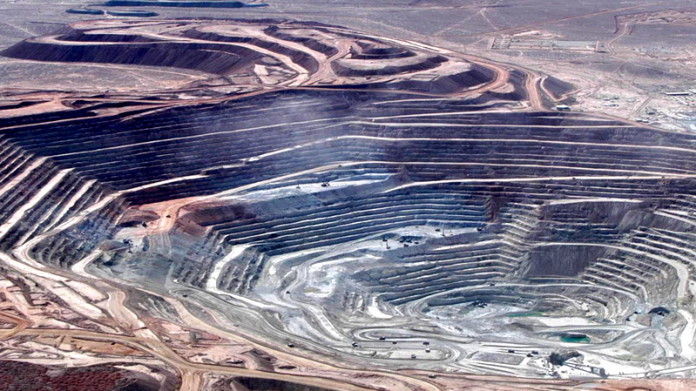
ANGLO American CEO, Mark Cutifani, may consider copper asset expansions or even acquisitions once net debt is further reined-in, and the firm achieves another $1bn pretax earnings from cost cuts and volume additions.
“I think we’ve already got a great portfolio and I don’t want to mention the G-word for the next 10 months,” he said when asked if it was the right time to consider expanding the group’s exposure to copper considering it was identified as a key, long-term commodity.
Cutifani’s comments follow a strong performance for Anglo in the 2016 financial year in which net debt was reduced to $8.5bn – far beneath its $10bn target. The group also flagged the possibility of paying dividends in 2018 whilst an credit rating improvement to investment grade was a strong likelihood this year.
“There is some 35 million carats of production capacity in De Beers so I don’t think we need to consider investing in mining there,” he said of the firm’s 85% investment. De Beers produced 27.4 million carats in the 2016 financial year.
“In the platinum business [Anglo American Platinum], we can continue to incrementally improve the business, and there are a lot of options for Chris [Griffith, CEO] at the right time,” said Cutifani.
“In copper, maybe there would be some opportunities, but we would need to see some good prices and it won’t be until 2018 before there are any step-outs,” he added.
Anglo produced 577,000 tonnes of copper in its 2016 financial year largely from Collahausi and Los Bronces, some 19% off 2015 output owing to the sale of Anglo American Norte for $300m. There is potential to expand Collahausi but the fact Anglo kept its capital expenditure budget flat in 2017 at some $2.5bn suggests that mine is not yet picked for expansion.
“There are also other parts of the business that we could do things with,” he added – although the second phase development of Minas Rio, the iron ore mine in Brazil is not currently one of them. “Let’s get to phase one completion first at Minas Rio at the right cost structure. We’ve got other options across the whole portfolio, but I’m more interested in growing financial returns to the shareholder,” he said.
Minas Rio increased production year-on-year 76% to 16.1 million tonnes (Mt) and has pencilled in a 2Mt increase in output for the current financial year. The mine’s first phase was identified in 2012 as ramping up to 26.5Mt with the potential to optimise to 29Mt.
Less clear, however, is how some of the South African assets take their place in portfolio over the long term. Cutifani saw “opportunities for improvement” in the assets and that there was “no imperative to head out of the country”.
Anglo owns 70% of Kumba Iron Ore, several export coal mines and a 45% stake in Samancor – manganese assets it shares in joint venture with South32 in South Africa’s Northern Cape province.
Analysts attending Anglo’s year-end presentation today asked repeatedly for reasons why plans to sell Kumba and the export coal mines had been shelved.
Cutifani uncharacteristically stuck to his script saying the company had not received value offers but remained open to any suggestions where “all shareholders” would benefit.
He said Kumba and the coal mines – which together contributed $1.8bn or some 29.5% of total earnings before interest, tax, depreciation and amortisation (Ebitda) and had the best Ebitda margins – could be managed “over the long term”.
Cutifani raised a few red flags over the South African assets however.
He was concerned over the lack of regulatory certainty in respect of amendments to the mining charter and surprise changes to the Minerals & Petroleum Resources Development Act – centrepiece legislation for the South African mining sector. He also expressed concerns over “fiscal changes” that would inhibit inward investment in the country where job creation was an imperative.
“It’s been 22 years and there’s been a lot of transformation. Look at the facts: the JSE has seen a transformation in its ownership … But that has to continue,” he said.
“What I would say is that could can’t keep changing policies in five-year lots,” he said, adding however that South Africa was protected by its constitution. “That protects the rights of all citizens. I believe in that document,” he said.










